Categories
Subjects
Authors
Artists
Venues
Locations
Calendar
Filter
Done
October 20, 2023 – Feature
London Roundup
Chris Fite-Wassilak

“Celebrating 20 years,” ran the bus and magazine ads for Frieze London, keen to capitalize on having reached a milestone. In 2003, the first fair was welcomed as a galvanizing and creative force—a Studio International review from the time breathlessly described it as the “the real thing […] the apotheosis of swing […] the Stargate.” Such enthusiasm seems cute now, after the artist projects that supposedly set the fair apart from other trade events (Mike Nelson earning a Turner Prize nomination in part for his 2006 installation at the fair) have been scaled back almost to invisibility, and the “Focus” section for younger galleries, introduced in 2013, effectively assimilated parallel smaller fairs such as Zoo and Sunday. Of the 164 stand-holders at this year’s Frieze London, only 30 of them (predominantly, of course, the larger multi-venue galleries) were at the first 2003 fair. Through all this, the fair has long presented itself as an annual temporary institution, masquerading as such among the long-term underfunding of the city’s public museums.
This hoarding of resources has a distorting effect on coinciding and parallel events that would otherwise register as an alternative, both to the fair and other art spaces around London. Several …
June 29, 2023 – Feature
London Gallery Weekend
Orit Gat

This year’s edition of London Gallery Weekend suggested something that initially surprised me: that the joy of seeing multiple shows in one weekend can be less in new discoveries than in meaningful re-encounters. Looking at Jadé Fadojutimi’s three-by-five-meter painting And willingly imprinting the memory of my mistakes (2023)—included in “To Bend the Ear of the Outer World,” an exhibition of contemporary abstraction curated by Gary Garrels at Gagosian—I thought, I still love this. I first encountered Fadojutimi’s work as part of the 2021 Liverpool Biennial; in this more formalist context I can see how the things I loved then—its blending of oil, pastel, and acrylic in one canvas, its massive presence—are in dialogue with painters I’ve been following for years. The invention and freshness of Laura Owens’s approach to painting is confirmed by every re-encounter; I continue to be amazed by how Charline von Heyl’s Circus (2022) evokes its colorful subject through abstract patterns of gray, black, and white.
Many galleries chose to dedicate their London Gallery Weekend shows to painting, and I loved many of the paintings on view. I was impressed with Shaan Syed’s four works at Sundy, which depict forms from the natural world—like the rubber plant—as …
May 20, 2022 – Feature
London Roundup
Orit Gat

In the local elections held the week before London Gallery Weekend, the residents of Westminster City Council, which covers much of central London, voted Labour into a majority for the first time since the council’s creation in 1964. The vote was partly informed by the Conservative council’s misguided decision, widely publicized in 2021, to spend six million pounds on the “Marble Arch Mound,” a twenty-five-meter-tall astroturf hill and viewing point designed to lure viewers back to the city’s busiest shopping district. It failed: many stores are still covered with for-rent signs, one of which peddled a “blank canvas for new ideas.” These are the visual and linguistic relics of the before-time: they represent old ideas of urban environments and their inhabitants’ habits, and beg the question, “What if we don’t want to return to how things were?”
At Emalin, Augustas Serapinas is displaying eight large black reliefs made of roof shingles taken from a wooden house from his home country, Lithuania. Many of these traditional architectures are now abandoned or destroyed and used for firewood. Serapinas bought one, broke it apart, charred its roof shingles, and repurposed them into monochromes that are part-painting, part-sculpture. They are heavy, loaded with their …
June 28, 2021 – Feature
London Roundup
Orit Gat
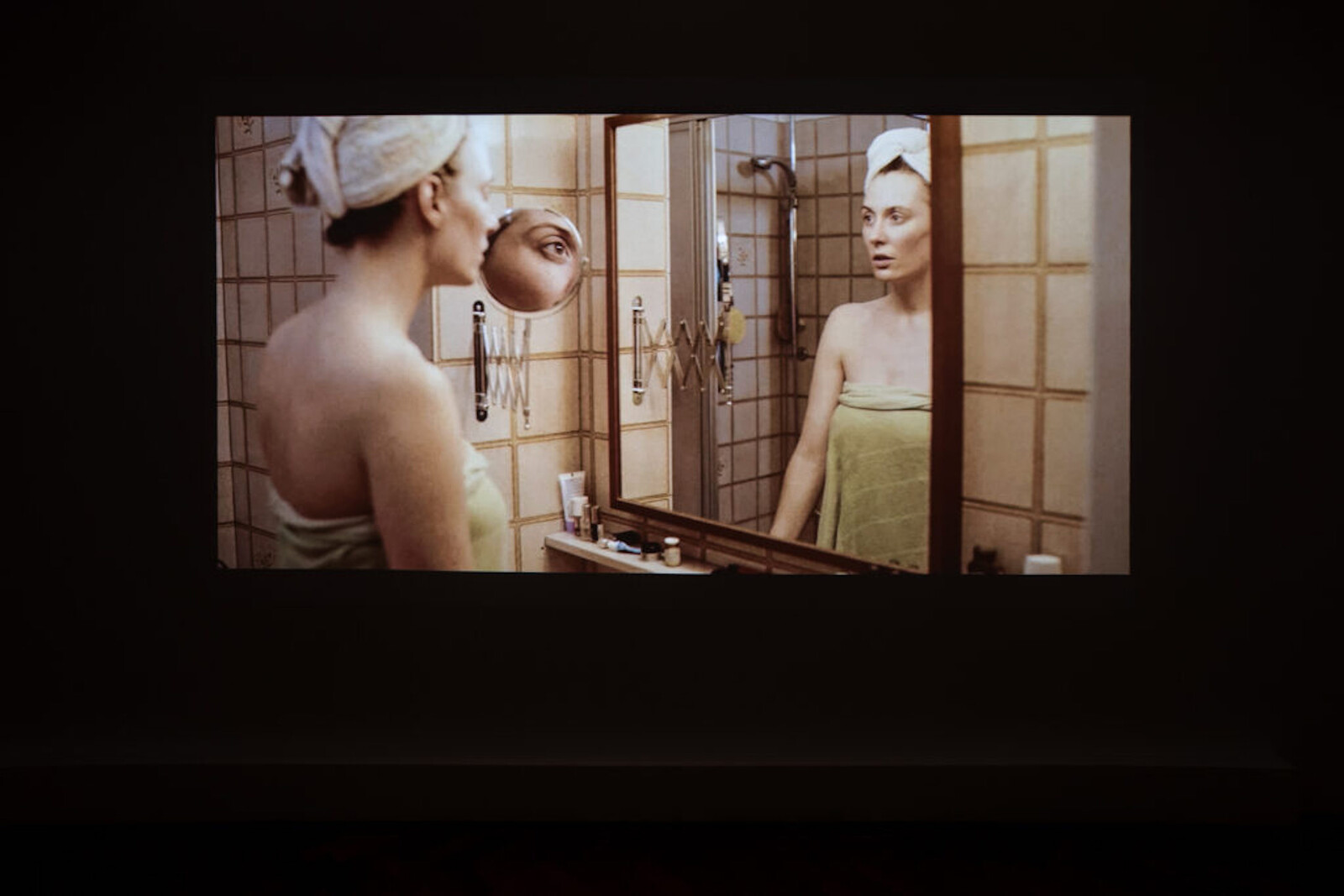
It would be impossible to think about London’s first Gallery Weekend in early June outside the context of the slow re-emergence from lockdowns. I know this strange sensation is not unique, but the experience of a public disaster dealt with largely by isolating from society has also marked the way I look at art. Taking stock of my tour of the city, it strikes me that the artworks which affected me most were ones that displayed intimacy, proximity, and all those daily exchanges from which I have felt distant these past sixteen months.
That is not to say that the daily and intimate are not political. At Lisson, “An Infinity of Traces,” a group show curated by Ekow Eshun, focused on the work of UK-based Black artists. It included Alberta Whittle’s video Between a Whisper and a Cry (2019), which explores Barbadian poet and historian Kamau Brathwaite’s idea of an oceanic worldview in the aftermath of the Middle Passage, and a series of watercolor text drawings by Jade Montserrat (who also has a solo show at Bosse & Baum in South London) that bear heavy, physical messages, like The smell of her still burning hair (2017). When I was trying to …
April 20, 2021 – Feature
London Roundup
Patrick Langley
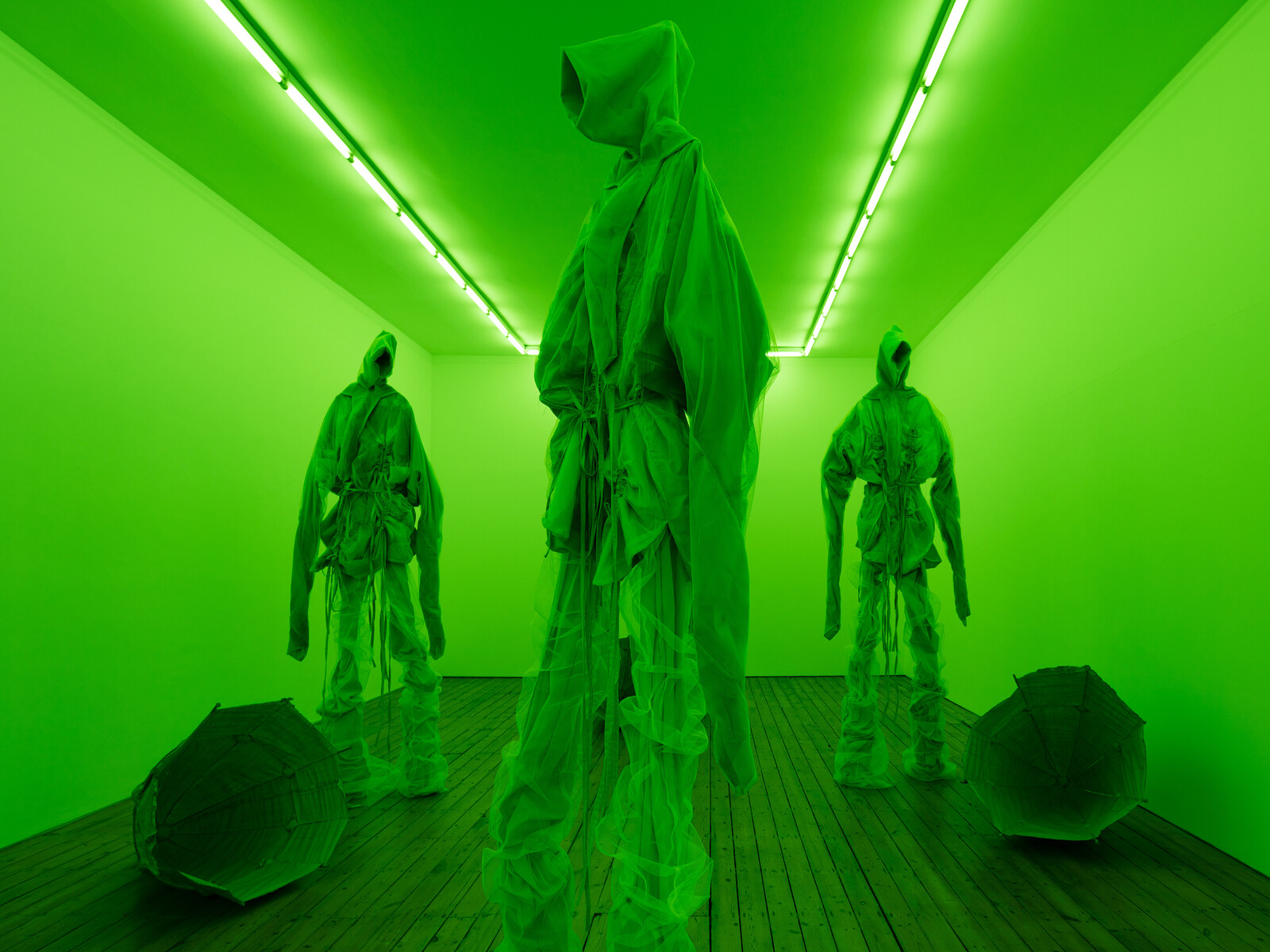
London’s galleries are open again. Exhibitions that were paused or postponed last fall have emerged from enforced hibernation into a cultural environment altered by six months of—well, not very much. To a quarantine-addled critic, this presents a quandary. One of the pleasures—and pitfalls—of writing about art is using it as a measure of lived experience: of holding work up to the light and saying, ah yes, this reminds me of something. The problem is, I haven’t much new experience against which to gauge the work. But maybe I’m not alone. In the capital’s galleries I kept noticing pieces, many made over this past year, that described a version of the same space—an unstable interior, variously possessed and infiltrated by outside forces. Which is to say, a state of mind. Or was I just projecting?
Leidy Churchman’s “The Between is Ringing,” at Rodeo’s Bourdon Street space, is a small, rewarding show of a dozen new paintings that range from smudgy abstraction to cartoonish exuberance. The work subtitled Diptych (all works share a main title with the exhibition and are dated 2020) comprises two oil-on-linen paintings, stacked one atop the other, depicting an abstracted living room that is also an existential void. The …
October 9, 2020 – Feature
London Roundup
Chris Fite-Wassilak
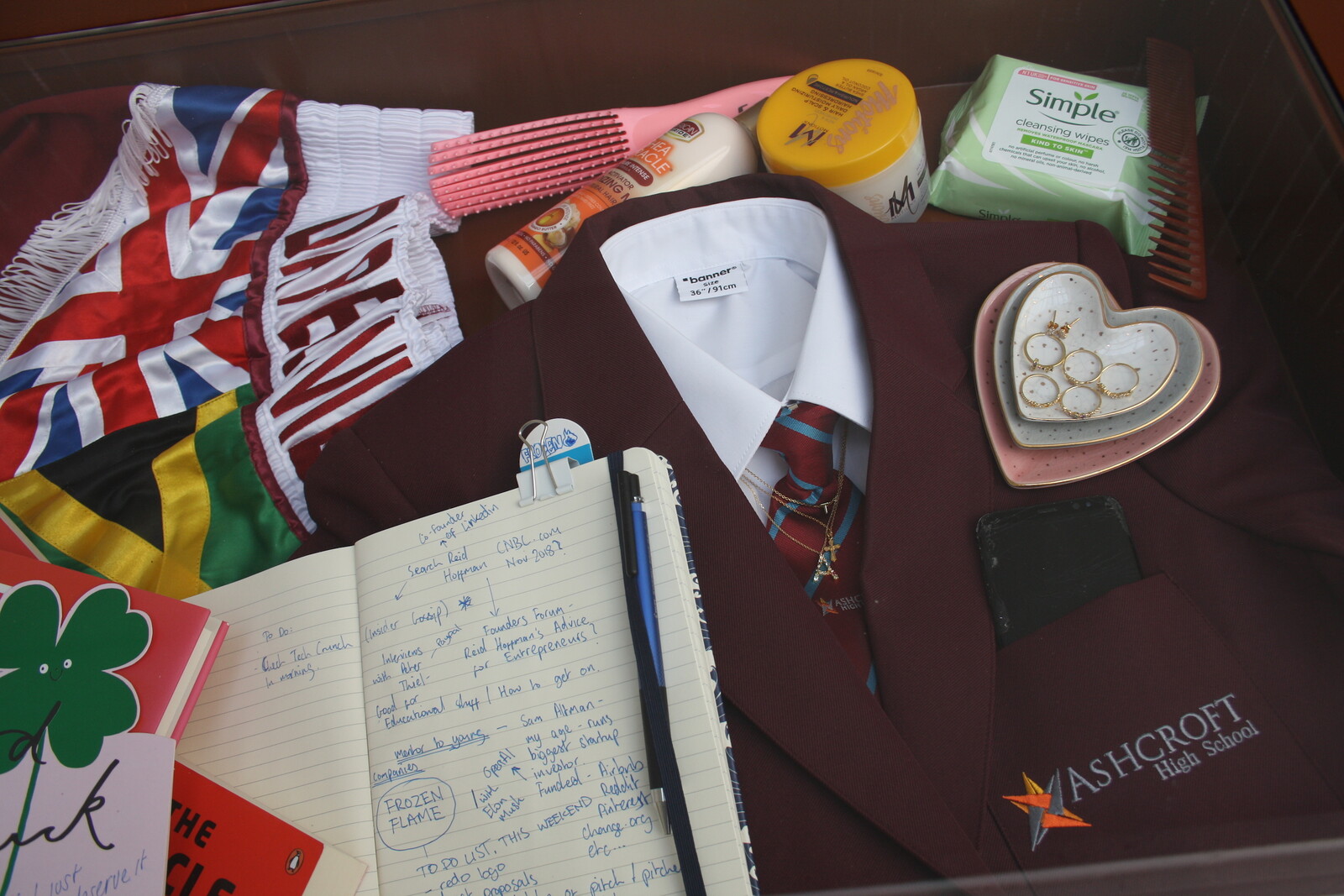
It’s an unlikely benediction: two identical photos frame Dozie Kanu’s exhibition “Owe Deed, One Deep” at Project Native Informant: a small, slightly blurred image of a tower with a hand at the top, reaching awkwardly towards the sky. Emo State (2020) seems to have been taken from a moving car, the landscape around it giving some sense of the sheer scale of the tower, a religious monument modelled on the tower of Babel in southern Nigeria, constructed only a few years ago and torn down in 2019. The ghost of this demolished structure, the two hands waving over the five sculptural assemblages gathered below them, casts the works as their own temporary monuments, momentary markers to whatever spirit or feeling has possessed us, before disappearing. In a corner, St. Jaded Extinguish (2020) is a gray fire extinguisher stand placed forlornly on a flimsy, short set of black stairs, a bottle opener attached to its base that spells out a nihilistic mantra: “SELF SERVE.”
Making my way around exhibitions for the first time since February, it was such slight, haunted gestures that stuck with me. It feels disconcertingly normal to traipse around the city at this time of year, albeit with pre-booking …
June 29, 2020 – Feature
London Roundup
Ben Eastham
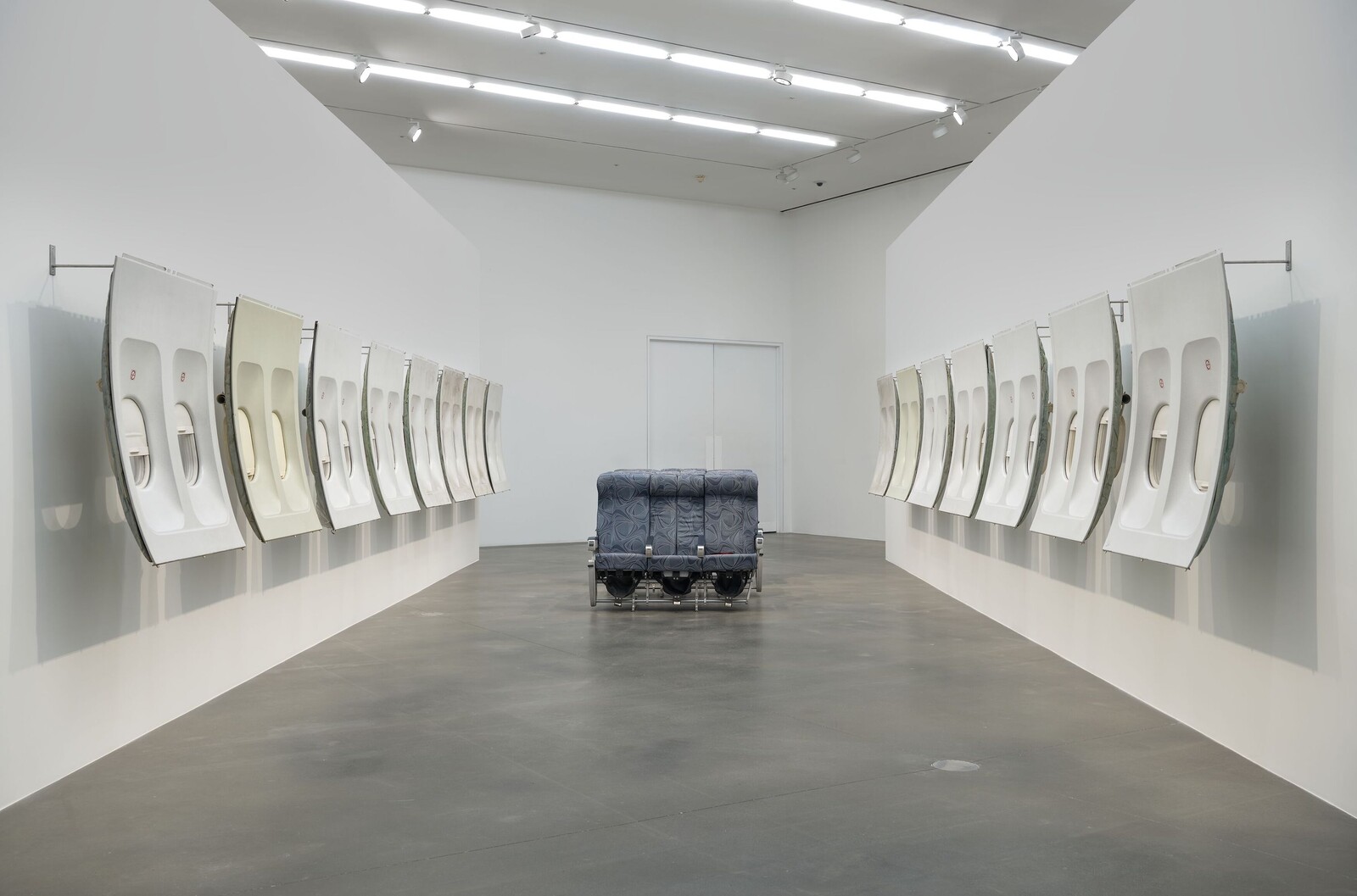
Every time I approach White Cube’s gleaming south London base, I am reminded of a trope in science-fiction films: a professor of linguistics is whisked to a top-secret government facility, decontaminated, and introduced to an alien intelligence whose ominous burps she is tasked with translating. These daydreams are no doubt prompted in part by mental association with Brian O’Doherty’s Inside the White Cube (1976), which drily observes that the “ideal” contemporary art space “must be sealed off from the outside world” in order to preserve the closed system of values that operates within it. But pulling on a mask, sterilizing one’s hands, and confirming one’s identity with a security guard lends these visions a new lucidity.
Beyond the hermetic seal, Cerith Wyn Evans’s experiments in sculpture and installation are right at home within the self-contained network of relations that O’Doherty describes, with a roomful of smashed glass screens referencing the high-modernist touchstones of Duchamp’s The Bride Stripped Bare by Her Bachelors, Even (1915–23) and its documentation by Man Ray. Two potted trees rotating slowly on turntables, their branches splayed over a cruciform bamboo trellis and illuminated by a spotlight that casts their silhouettes over the far wall, suggest an …
October 7, 2019 – Feature
London Roundup
Chris Fite-Wassilak
%20provisioning_hr.jpg,1600)
The world is burning. This is not a metaphor. The sky is bleached a searing lime green, tinged with burned orange that reflects off relentless choppy waves. Suddenly, the sky goes blood red and the horizon blackens, the sun a dull hole punched in the sky. Our view shifts, panning quickly to the left, then back again, as if searching for something, anything. The sky then changes again to a blinding sherbet yellow. The screen depicting this scene, mounted on a metal rack above a whirring circuit board, gives us a certain vision of our current reality. The shifting colors are a translation of information from a small atmospheric monitor mounted on the back of the rack. It’s not clear what directly causes the hues to brighten or waves to get that bit higher or more intense in Yuri Pattison’s sun[set] provisioning (2019) at mother’s tankstation—whether the car exhaust from the street outside, or the hungover breath from bodies in the room might make the scene that bit more trippy. The contraption offers a heavily mediated fiction, but it also makes an actuality visible and present: a drowned world, made hallucinatory and beautiful by toxins that saturate the air and …
July 29, 2019 – Feature
“Misbehaving Bodies: Jo Spence and Oreet Ashery”
Philomena Epps
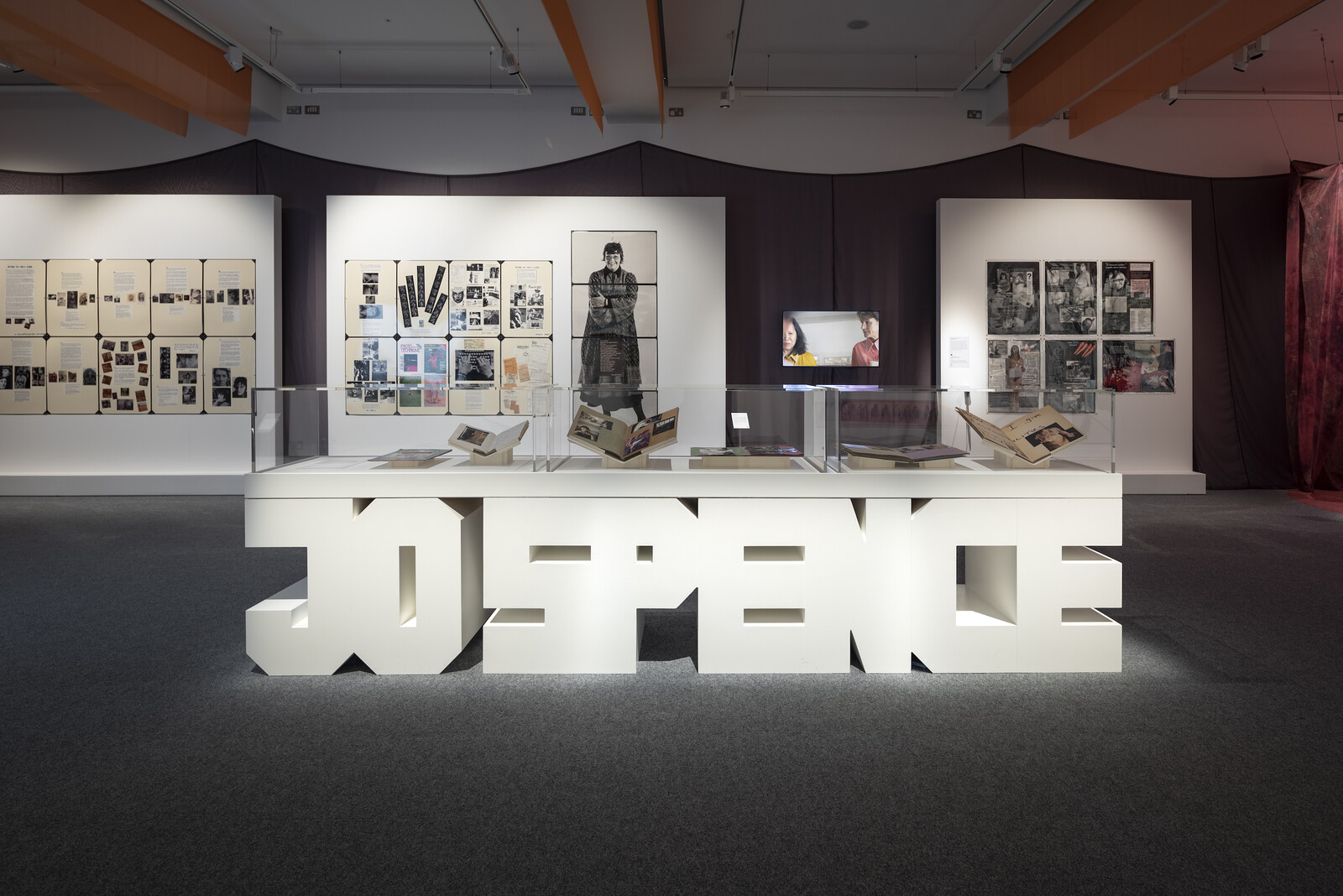
“Everyone who is born holds dual citizenship in the kingdom of the well and the kingdom of the sick,” wrote Susan Sontag in Illness as Metaphor (1978), “although we all prefer to use only the good passport, sooner or later each of us is obliged, at least for a spell, to identify ourselves as citizens of that other place.” This quote opens “Misbehaving Bodies” at the Wellcome Collection, which places Jo Spence’s healthcare work from the 1980s in conversation with Oreet Ashery’s 12-part web series “Revisiting Genesis” (2016). Through references to chronic and fatal illness, identity formation, medical discourse, and the politics of healthcare, the exhibition pays particular attention to how citizenship to the “kingdom of the sick” might productively disrupt and diversify common understandings of life and death, the body, and community.
Spence’s autobiographical artwork Beyond the Family Album (1979) takes the conventional form of the family photo album—photographs and press clippings are affixed to large sheets of paper, accompanied by captions and extended passages of text—but subverts the form by manifesting as a counter-archive of the self. By charting her divorce, her parents’ ill health, and her own struggles with chronic asthma, in addition to interrogating the invisibility …
October 12, 2018 – Feature
London Roundup
Mariana Cánepa Luna
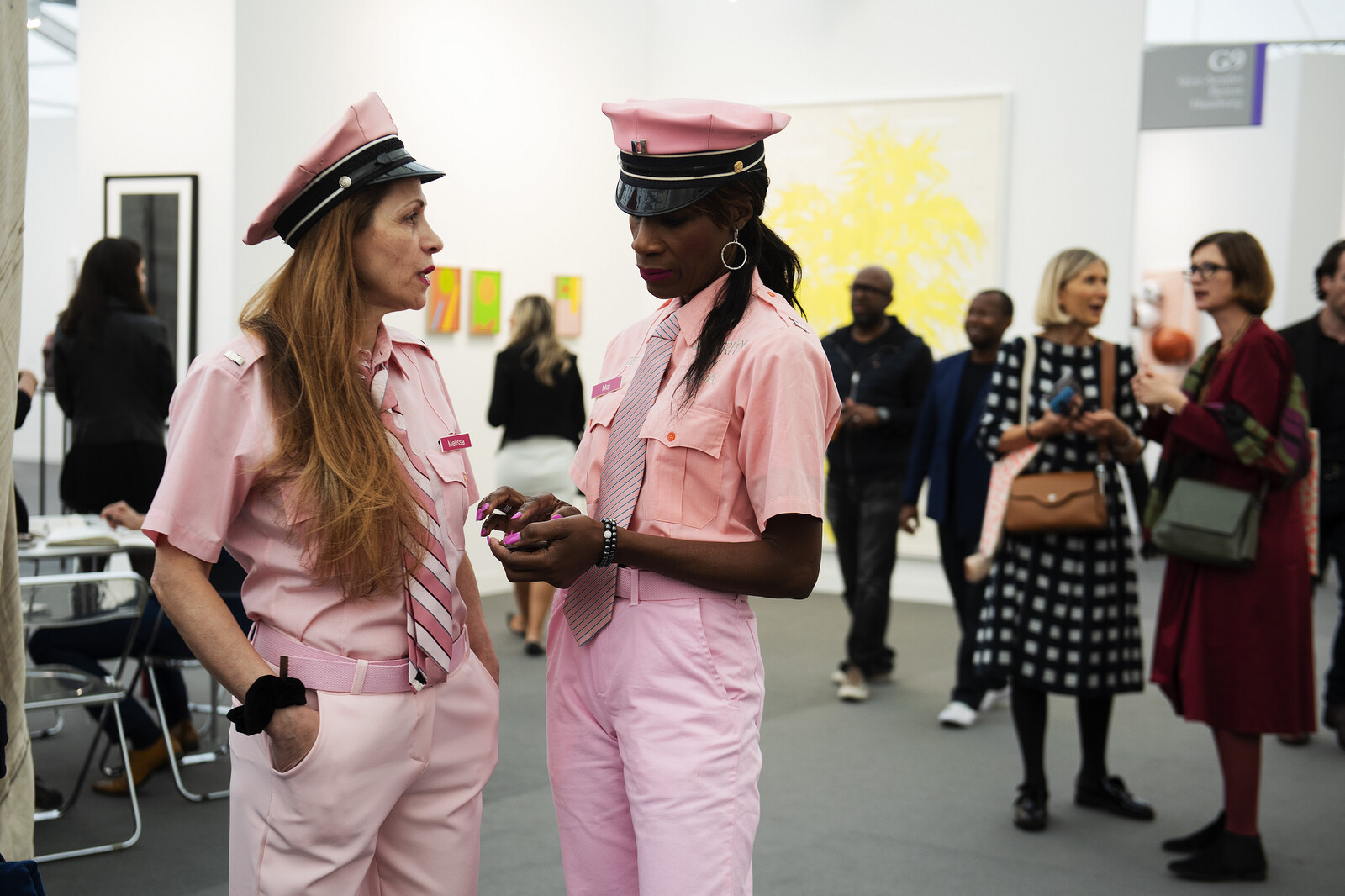
Just as Frieze Art Fair opened last Wednesday, Prime Minister Theresa May gave her keynote speech—and dared to dance again—at the Conservative Party Conference in Birmingham. She announced that freedom of movement would be terminated “once and for all” by limiting access to “highly skilled workers” (in short, migrants earning over 30,000 British pounds per year). Countless art professionals earn much less (including entry-level curatorial staff at Tate, and yours truly), as well as doubtless many of the myriad gallery and museum folks involved in the city-wide jamboree of Frieze week. How do we imagine London’s contemporary art ecology post-Brexit, a scene that has grown exponentially since Tate Modern’s opening in 2000 and the first Frieze Art Fair in 2003? The question of how the 2019 edition of the fair is going to be affected was the elephant in the tent. Most people I asked shrugged: negotiations are still ongoing, consequences are yet to be seen. “It’ll be fiiiiine,” a London museum director told me. “Maybe we’ll visit a smaller fair, like the first editions—remember those days?” opined a British gallerist friend working in New York. Although one could put this upbeat denial down to the cliché of dark British …
July 18, 2018 – Feature
“Signals: If You Like I Shall Grow”
Isobel Harbison
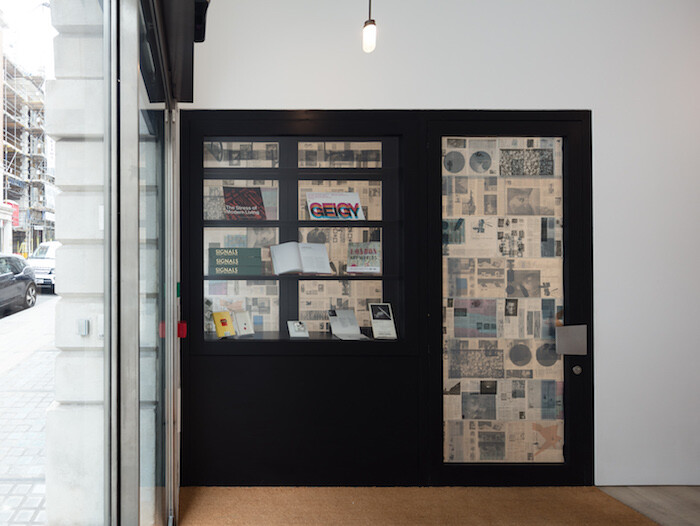
“Signals: If You Like I Shall Grow” is an exhibition of works that come from a past that was alive to the future. Initiated by Mexico City’s kurimanzutto, held across the two spaces of London’s Thomas Dane gallery, and curated by Isobel Whitelegg, the exhibition echoes the interdisciplinary alliances of its subject matter: London gallery Signals’ activity between 1964 and 1966. As well as being a commercial entity, Signals was also an innovative project space, an experimental publishing endeavor, and a loosely associated set of artists primarily active between the UK (London and various regional centers) and Latin America (Venezuela and Brazil, primarily).
Both moderately sized spaces are dense with works, 42 in each. But an absence of durational work (with the exception of Gustav Metzger: Auto Destructive Art, by Harold Liversidge [1965] and Free Radicals by Len Lye [1958–79], shown consecutively on a monitor, on loop) and the careful editing of archive material (there’s a vitrine of editions near the entrance and, further into the gallery, a bench/table structure featuring excerpts from several publications), means that navigating through it is not an overwhelming documentation-heavy endeavor. There are no wall labels; the works are not divided by medium, geographical origin, theme, …
July 20, 2017 – Feature
“Letter from Istanbul”
Filipa Ramos / Morgan Quaintance
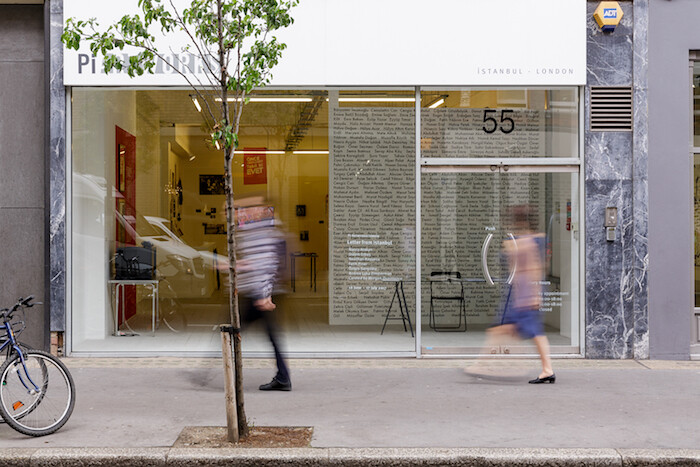
In curating “Letter from Istanbul” at Pi Artworks, London, Morgan Quaintance combined multiple approaches to examine the cultural, social, and political life of Istanbul. He expanded the format of the exhibition to open a direct dialogue between artworks and diverse materials and documents, while also including radio broadcasts and a documentary film. In this conversation with Filipa Ramos, Quaintance reflects on his intentions, interests, and methodologies while also considering the limits of grasping, displacing, and presenting the socio-cultural context of a city in the form of an “informal dispatch.”
Filipa Ramos: When I first visited “Letter from Istanbul,” a group of students were using the public space of the show to reflect upon it. I was particularly interested by one overheard comment, in which a woman maintained that “it’s difficult to know where the curator ends and the art begins due to the combination of documentation and artworks.” So maybe we could address this first: what was your intention in presenting journalistic materials—music pamphlets, political documents, scenes from various demonstrations, books, and texts—alongside artworks?
Morgan Quaintance: I think at the root of “Letter from Istanbul” was the impulse to curate an exhibition as abstracted city report or informal dispatch. But, instead of …
March 10, 2016 – Feature
Daria Martin’s “At The Threshold”
Morgan Quaintance
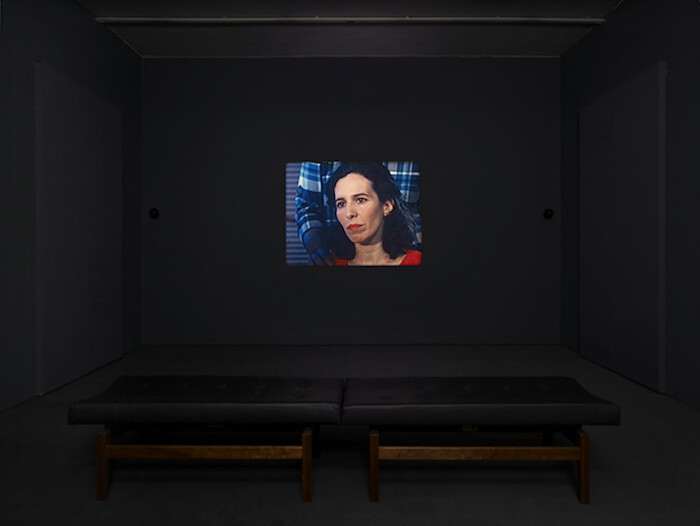
“I experience pain and sensation in response to seeing or thinking about another individual getting hit or touched on part of their body.” This description of mirror-touch synesthesia—the ability to feel the same or sympathetic physiological sensations and emotional states in sync with another human being, animal, or sometimes an object—is given by Sophie. Her written account is part of a correspondence between London-based filmmaker Daria Martin and other mirror-touch synesthetes. All provide insights into experiences of highly empathic intersubjectivity, and informed Martin’s development of three short films. At The Threshold (2014-2015), a narrative of domestic co-dependency threatened by an outside force, is the second and most recent installment in the trilogy. Projected in a small, dark room, it is a hypnotic vision of uncanny sensuality, shot in saturated 16mm film, in which the lines between self, other, and object dissolve into a holistic sensory continuum.
The setup is simple. A mother and son are housebound synesthetes. Theirs is an interior world of wonder, a microcosm of things and materials that open a universe of rich associative and intensely poetic sensory experience. A red jumper, a cracked eggshell, a ball of wool: each cause a rush of psychophysiological associations for the …
October 19, 2015 – Feature
London Roundup
Orit Gat
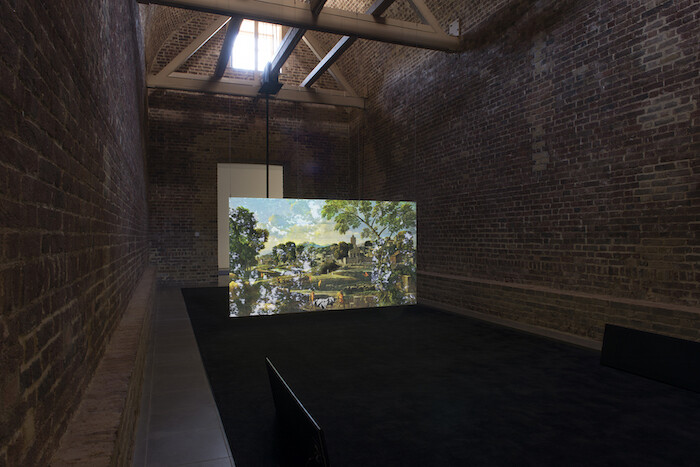
In an art fair week, when it seems like everyone around is constantly discussing where they were, what they saw, and how it was, discourse is dependent on physical participation, on the encounter with art in a space, strengthening the primacy of the exhibition as a mode of experiencing artwork. While there is still a lot of thinking to be made about how display has historically shaped production and continues to do so, Frieze week in London is a great moment to assess whether there is something about the exhibition that makes it such a lasting form.
So why do we still go see exhibitions? Chisenhale Gallery is showing Jumana Manna’s A magical substance flows into me (2015), a 70-minute film screened five times a day. It is an exploration of traditional local music in Palestine/Israel, based on Manna’s research into the work of the German-Jewish ethnomusicologist Robert Lachmann (1892-1939) in Mandatory Palestine. Manna plays radio recordings made by Lachmann on an iPhone to the participants in her film, ranging from a young Jewish musician singing the Arabic songs her Moroccan grandmother taught her to a Palestinian flute maker who explains that traditional Palestinian music is more fashionable in the West …
Load more
